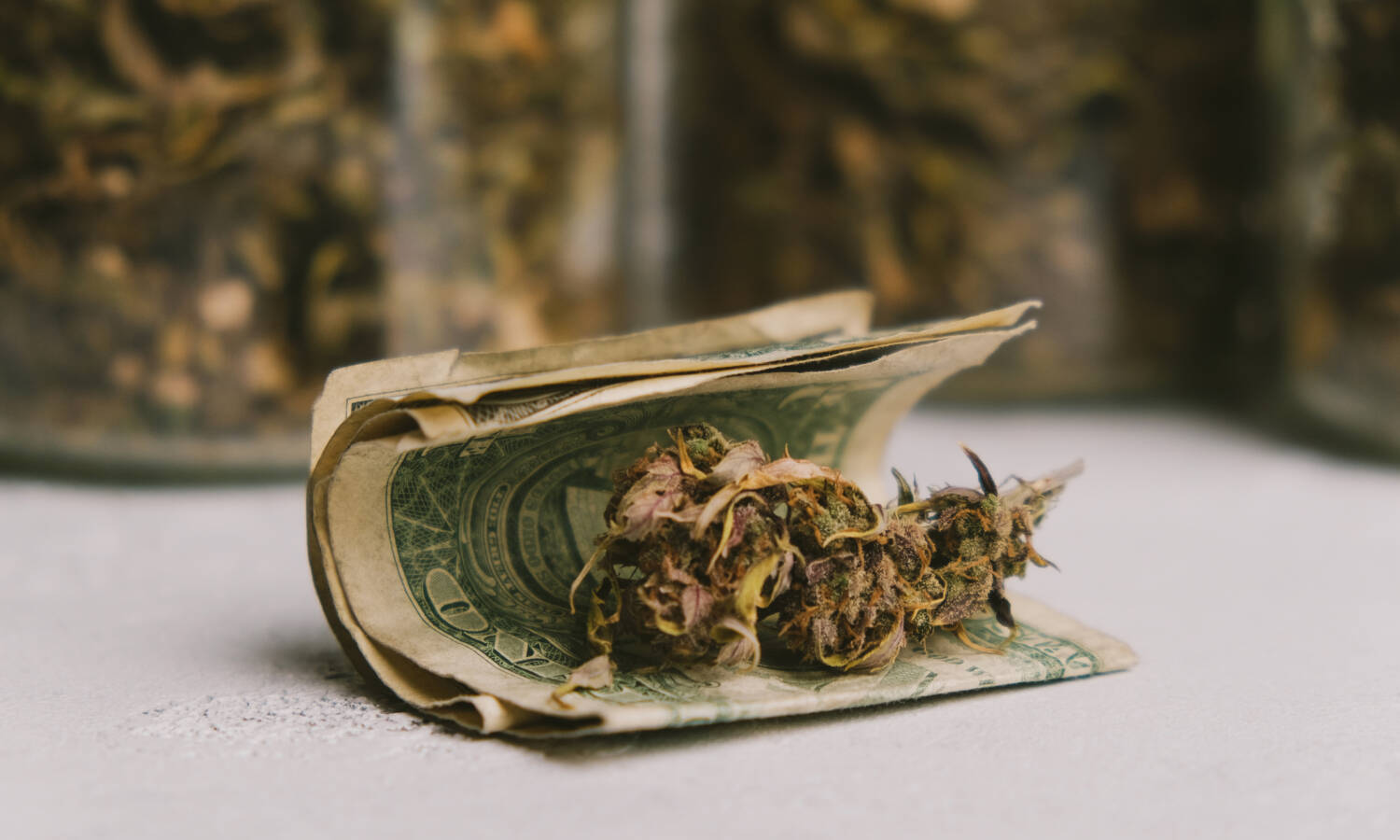
Is the Cannabis Industry Inflation-Proof?
This article originally appeared on Cannabis.net and has been republished with permission.
Almost everything is getting more expensive these days: from groceries to utilities, and with insane gas prices skyrocketing due to the war in Ukraine, it can be difficult to keep up with the costs.
Thankfully, cannabis prices seem to be coming down — and that’s fantastic news for consumers. Data from Headset, a cannabis analytics company, showed that cannabis flower, vape, and edible prices are down an average of 16.7%, 12.4%, and 11.8%, respectively, from January 2021 through January prices 2022 were examined. They analyzed sales in California, Washington, Oregon, Nevada, Colorado and Michigan.
Photo by Darren415/Getty Images
There are many reasons that contribute to this. First, risk: if cannabis growers are at high risk of being caught selling cannabis, it would help drive prices up. However, cannabis is already legal in most states, which is reflected in a drop in prices. Growers can legally and safely sell their products to brands and direct to consumers.
Of course, supply and demand also affect prices. Just because prices aren’t going up doesn’t mean there isn’t inflation; it simply means that other forces are at work helping to keep prices stable. There’s also the fact that the black market still exists (which has long been a cheaper option for consumers in expensive markets), plus taxes, so pharmacies and brands need to ensure prices are still attractive enough.
In addition, it is difficult to simply downsize a pack and charge customers the same price as manufacturers have done with other goods such as candy bars. This is not so easily possible with cannabis as many product categories are sold by either their THC/CBD content or their weight, such as: B. Buds, edibles, and vape pens. When pack sizes are reduced, consumers take notice immediately and it becomes that much more difficult to market and sell.
The cannabis industry suffered particularly from the challenges posed by the labor market and supply chain issues during the peak of the pandemic. However, the resulting higher costs were absorbed by the margins instead of increasing the product prices in the pharmacies.
Factors affecting the price
Another report, titled “Price. It’s Complicated” by Deloitte Canada, BDSA and Hifyre states that “Consumers are willing to pay a high price for quality and the laws of business apply to cannabis. But in other cases, price-related factors suggest that there are several key differences. Value for money – that is, value – can be confusing. There is no national pricing. And branding doesn’t play a huge role (yet).’ The report also found that consumers use a cannabis product’s THC and CBD levels to determine its value, as well as the type of high it induces, which comes from smell and taste is determined.
RELATED: How Much Does Weed Cost?
It’s also important to note that location matters. The report states that the same product costs differently in different states, with no clear explanation as to why. They stated that 10mg of Wana Sour Gummies sold for $27.59 for a 10-piece pack in Illinois, $18.01 in Colorado, then just $8.03 in Oregon. Note that some markets have also adopted certain practices that allow their loyal consumers to save money; in Washington and Colorado, for example, if you buy more cannabis, you pay less. This type of method encourages more frequent product changes and motivates repeat customers to keep coming back.
While the cannabis industry isn’t exactly inflation-proof, there are reasons why the price has seemed protected from the effects of inflation.
 Photo by Olena Ruban/Getty Images
Photo by Olena Ruban/Getty Images
changing landscape
These things don’t mean that cannabis prices will always stay the same. Keep in mind that the industry has an ever-changing landscape, and each county and state has different laws that will always affect its spread, legality, and growth. Many states are already mature, and many more will follow in the coming years. Truck industries like tobacco, alcohol, and pharmaceuticals have made serious investments in the cannabis market, which will transform the industry in a few years.
RELATED: Despite inflation, cannabis prices are falling
And like any fledgling industry, capital is required for cannabis companies to continue growing. And since it’s still illegal at the federal level, cannabis companies don’t have the same banking benefits as other industries. Raising capital is difficult and expensive, but has become easier in recent years thanks to low interest rates.
The Federal Reserve has indicated that it plans to raise interest rates not once, but three times by the end of next year, and this could have serious implications for how cannabis companies will be able to obtain capital to grow their businesses.
bottom line
That being said, how do you know if you’re overpaying for your habit? Well, there’s really only one way to say this: do you feel you’re getting value out of the monthly expenses you spend on cannabis? If your answer is no, then it’s probably too much.
Inflation continues to impact other industries, but cannabis users can enjoy being spared. But the cannabis industry is still on the path to expansive growth and will eventually become more socially acceptable in the years to come. Despite this, it will continue to face challenges resulting in a volatile environment.
This article originally appeared on Cannabis.net and has been republished with permission.

Post a comment: